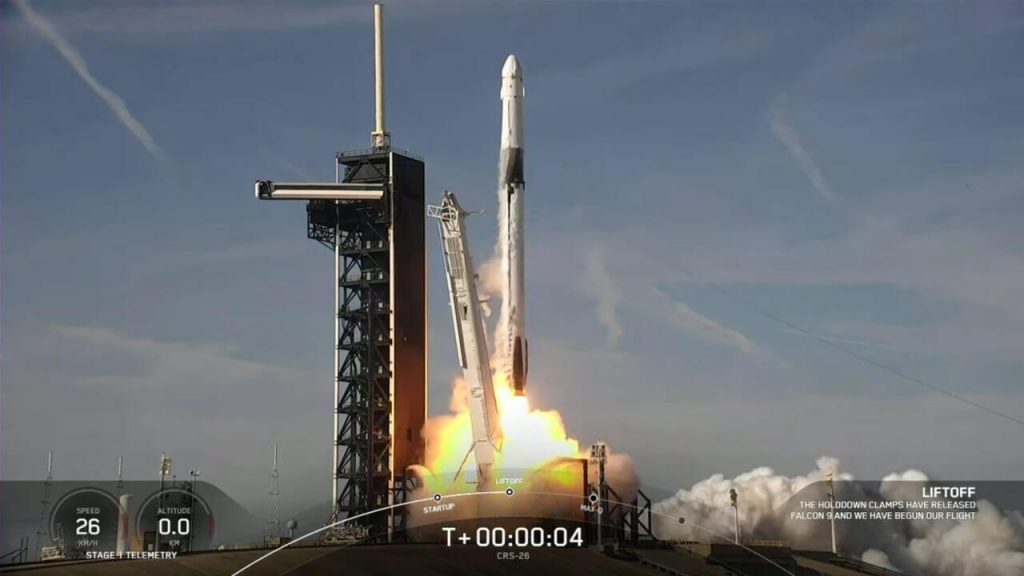The mission took off from NASA's Kennedy Space Center in Florida around 10:20 p.m. ET on Saturday. Add to supply list
Solar panels will be installed outsidefloating laboratory during a spacewalk scheduled for November 29 and December 3. They will additionally power the space station with energy.
 SpaceX mission launch
SpaceX mission launch
Over the past decade, SpaceX has launched more thantwo dozen missions to resupply the space station in a multi-billion dollar deal with NASA. The launch comes in SpaceX's busiest year to date, with more than 50 operations completed so far, including two astronaut missions.
Cargo on board includes a number of items forhealth care, such as the lunar microscope kit. The portable handheld microscope will allow astronauts to collect and send images of blood samples to flight surgeons on Earth for diagnosis and treatment.
Nutrients are keycomponent of maintaining good health in space. But fresh food on the space station is in short supply compared to the prepackaged meals that astronauts eat during their six-month stay in low Earth orbit.
“For our research purposes at NASA, it is veryit is important to be able to support the crew not only with nutrition, but also consider different types of plants as sources of nutrients that we will find it difficult to maintain during long journeys between distant destinations, such as Mars and so on, ”said Kirt Costello, Chief Scientist of the Program NASA International Space Station and Deputy Head of the ISS Research Integration Division.
Astronauts have grown and tasted different types oflettuce, radish and chili on the International Space Station. Crew members can now add a few dwarf tomatoes — notably Red Robin tomatoes — to their list of space-grown salad ingredients.
Dwarf tomato seeds will be grown attwo different light treatments to measure the effect on the number of tomatoes that can be harvested, as well as the nutritional value and taste of the plants. Red Robin tomatoes will also be grown on Earth as a control experiment. The two crops will be compared to measure the effect of weightlessness on tomato growth.
Space tomatoes will be grown in smallpouches called plant pads installed in the vegetable production system, known as the vegetable growing chamber, on the space station. The astronauts will frequently water and care for the plants.
“Tomatoes will be a new adventure for us ina team of vegetarians trying to figure out how to keep these thirsty plants well-watered without over-watering,” said Joya Massa, NASA Space Crops Scientist and Principal Investigator of Tomatoes.
The tomatoes will be ready for the first tasting in the spring.The team expects tomato harvests 90, 97 and 104 days after plant growth begins. During the tasting, the team evaluates the taste, aroma, juiciness and texture of tomatoes grown using various light procedures. Half of each tomato crop will be frozen and returned to Earth for analysis.
The hardware is still inin development for a larger crop on the space station and eventually on other planets, but scientists are already planning which plants will grow best on the Moon and Mars. Earlier this year, the team successfully grew plants in lunar soil, including samples collected during the Apollo missions.
“Tomatoes would be a great food for Luna,” Massa said. “They are very nutritious, very tasty, and we think astronauts will be very happy to grow them there.”
Read more:
Created a navigation system that is more accurate than GPS
Look at the result of a "head-on collision" of two galaxies: this is a very rare occurrence.
Named the main danger of the lunar mission "Artemis"